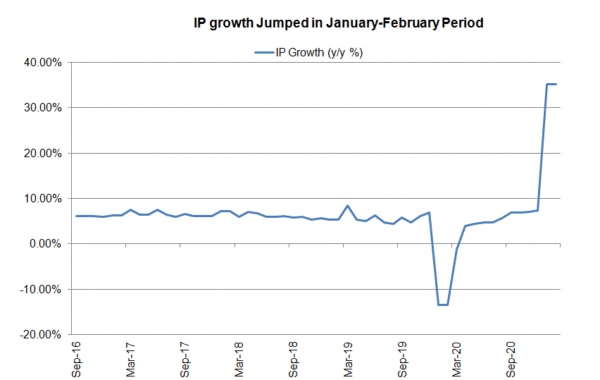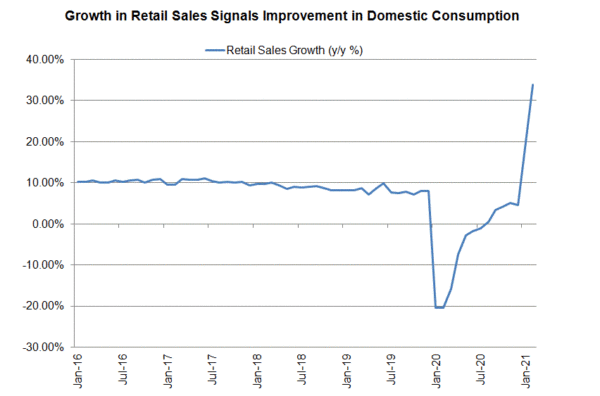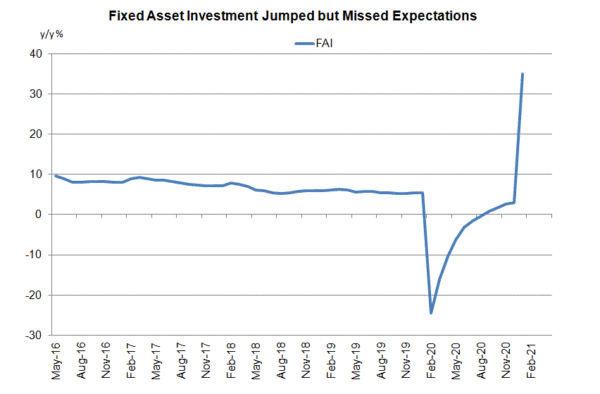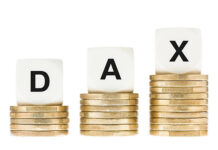China’s macroeconomic data for the first two months of this year have delivered a mixed message. While growth in industrial production (IP), retail sales and urban fixed asset investment (FAI) all exceeded 30% when compared with the same period of last year, this was driven by the exceptionally low base. China was severely ridden by the coronavirus outbreak during the period. Moreover, although growth of IP and retail sales came in stronger than expectation, that of FAI was disappointing.
IP jumped +35.1% y/y in January-February, beating consensus of +32.2% and December’s +7.3%. Production in auto and microcomputer industries recorded the strongest expansion in the first two months of this year, growing +89.9% y/y and +111.9% y/y respectively. Improvement of both domestic and overseas demand supported the auto sector. Green policies in different countries have lifted demand for electric vehicles. Shortage of semiconductors is a clear reason for the sharp rise in the latter.
Looking at retail sales, retail sales soared +33.8% y/y during the period, compared with consensus of +32.2% and December’s +4.6%. Categories such as jewelry (+98.7% y/y), automobiles (+77.6%y/y) and catering (+68.9% y/y) showed stronger than average growth in sales. These suggest consumption in the Lunar New Year holiday in the consumer discretionary sector improved. Despite restrictive measures for containing the pandemic, the strong expansion in the catering sector also indicates the pickup in consumer confidence.
Fixed asset investment (FAI) rose +35% y/y in the month through to February. The market had anticipated a growth of +40%. While FAI growth missed expectations, investment in healthcare production and “special equipment jumped during the period. For the former, the +64% y/y growth could be driven vaccine production while the +60.2% growth for the latter was likely due to expansion of capacity of semiconductor.
The set of data indicates that China’s economic activity accelerated in the first two months of this year, mainly due to low base effect. As the global economic recovery is expected to accelerate in the second half of the year, we believe exports growth to lend support to industrial production, while domestic spending to sustain retail sales growth.















